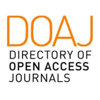Articles
Abstract
It
La mummia scoperta nel sarcofago ligneo di Ankhpakered, sacerdote del dio Min, è stata studiata presso il CEDAD (Centro di Datazione e Diagnostica) dell'Università del Salento, Italia. La TC, eseguita sulla mummia dal team multidisciplinare del Mummy Project di Milano, ha evidenziato caratteristiche insolite, facendo ipotizzare un riutilizzo del sarcofago. Diversi campioni sono stati prelevati per via endoscopica per essere sottoposti ad analisi AMS (Accelerator Mass Spectrometry) per la datazione al radiocarbonio, effettuate presso il CEDAD, e ad analisi FTIR (Fourier Transform Infrared).
En
The mummy discovered in the wooden coffin of Ankhpakered, priest of Min god, has been studied at CEDAD (Centre for Dating and Diagnostics) at the University of Salento, Italy. The CT analyses, performed by the multidisciplinary team of the Mummy Project of Milan, highlighted unusual features of the mummy, suggesting a re-use of the sarcophagus. Furthermore, specimens were taken via endoscopy for AMS (Accelerator Mass Spectrometry) radiocarbon dating and FTIR (Fourier Transform Infrared) analyses which have been carried out at CEDAD.
La mummia scoperta nel sarcofago ligneo di Ankhpakered, sacerdote del dio Min, è stata studiata presso il CEDAD (Centro di Datazione e Diagnostica) dell'Università del Salento, Italia. La TC, eseguita sulla mummia dal team multidisciplinare del Mummy Project di Milano, ha evidenziato caratteristiche insolite, facendo ipotizzare un riutilizzo del sarcofago. Diversi campioni sono stati prelevati per via endoscopica per essere sottoposti ad analisi AMS (Accelerator Mass Spectrometry) per la datazione al radiocarbonio, effettuate presso il CEDAD, e ad analisi FTIR (Fourier Transform Infrared).
En
The mummy discovered in the wooden coffin of Ankhpakered, priest of Min god, has been studied at CEDAD (Centre for Dating and Diagnostics) at the University of Salento, Italy. The CT analyses, performed by the multidisciplinary team of the Mummy Project of Milan, highlighted unusual features of the mummy, suggesting a re-use of the sarcophagus. Furthermore, specimens were taken via endoscopy for AMS (Accelerator Mass Spectrometry) radiocarbon dating and FTIR (Fourier Transform Infrared) analyses which have been carried out at CEDAD.
Keywords
Datazione al radiocarbonio; Spettrometria di Mass con Acceleratore; Mummia Egizia
Full Text:
PDFDOI: http://dx.doi.org/10.2423/i22394303v3n1p47
References
Article Metrics
Metrics Loading ...
Metrics powered by PLOS ALM
Refbacks
- There are currently no refbacks.
Copyright (c) 2013 Carla Corvaglia, Sabina Malgora, Lucio Calcagnile, Gianluca Quarta, Marisa D’Elia

This work is licensed under a Creative Commons Attribution-NonCommercial-NoDerivatives 4.0 International License.
SCIRES-IT, e-ISSN 2239-4303
Journal founded by Virginia Valzano





